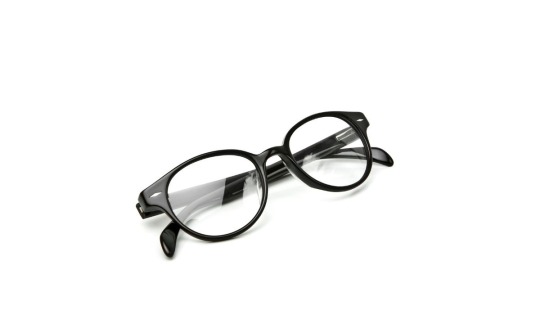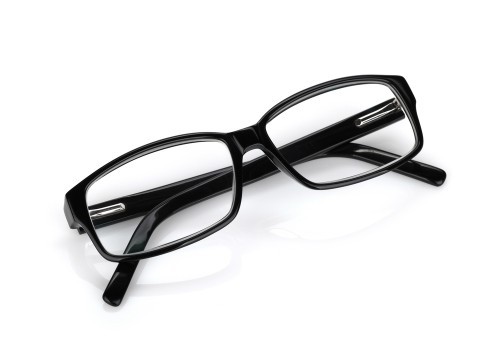#like lightweight scratch resistent anti-glare transition lenses
Text

Day 240, back to Marie's expression sheet! We're on the inking stages instead of the sketching stages (although I could technically do tie-down sketches, especially for the pilot suit expressions, but nah). Happy got re-done since I wasn't too fond of the first go with it, and I'm super pleased with Pleased :D Really like using a thicker line brush for her, it helps add weight and volume to her hair that I'm really happy with :D
#the great artscapade of 2022#bobbi's being weird again#art#my art#friend oc#roommate oc#untitled gunpla comic#what other tags did I use for this I feel like I had at least four more#oh well no need to over-tag#it's not like my blog is actually organized anyway :P#Y'AAAAAAALLLLLLL I'm so excited!#I get my ''retention stipend'' check on Thurday and I'm gonna go see an eyeball doctor and get new glasses this weekend!!! :D :D :D#probably on Saturday#at least for the eye exam#actual glasses may take a couple weeks because no one carries my prescription in store#it too stronk#too powerful for a mere retail location#also I get all sorts of ridiculous add-ons#like lightweight scratch resistent anti-glare transition lenses#if they have anti-fog coatings now I'll be all over that#but supposedly you can just use shaving cream for that?#idk I haven't tried it#but yeah I have to get the lightweight polycarbonate lenses because glass lenses are too heavy#my lenses are thicc yo#as they should be tbh#I can't even see to my elbow without my eyeball enhancement hardware#oooooo I hope they have purple frames this time#I like my dusty pink frames but I MISS my purple frames
2 notes
·
View notes
Text
Grasping Vision and Eye Wellbeing: Choosing Quality Lenses for Optimal Clarity

Understanding the complexities of vision and eye health is crucial for maintaining optimal eye function. The eye, a remarkable organ, works in conjunction with the brain to interpret the world around us. However, various factors can impact eye health and functionality.
Components of the Natural Eye
The natural eye comprises the cornea, lens, retina, and optic nerve. Light enters through the cornea, passes through the lens, and focuses on the retina, where photoreceptor cells convert light into electrical signals. These signals are transmitted to the brain via the optic nerve, enabling us to perceive our surroundings.
Common Eye Issues
The eye is susceptible to various health issues such as myopia, hyperopia, astigmatism, and age-related conditions like presbyopia. These conditions can result in blurred vision, eye strain, headaches, and diminished quality of life. Additionally, compromised vision poses safety risks in activities like driving, reading, working, and sports.
Quality Lenses
Types and Features: The lenses in your eyewear significantly impact your experience. Let's explore different types of eyeglass lenses and their key features:
Single Vision Lenses: Designed to address a single vision issue (myopia or hyperopia).Consistent prescription power throughout the entire lens.
Bifocal and Progressive Lenses: Bifocal lenses are suitable for presbyopia, offering both distance and close-up vision correction. Progressive lenses provide a seamless transition from distance to intermediate to near vision without a visible line.
Lens Materials and Coatings:
Plastic vs. Glass Lenses: Plastic lenses are lighter and less prone to breakage, making them a popular choice. Glass lenses, although heavier, offer excellent optical clarity.
Anti-Reflective Coatings: Reduce glare, reflections, and halos around lights, enhancing vision clarity, especially at night.
UV Protection: Lenses with built-in UV protection safeguard eyes from harmful ultraviolet rays, reducing the risk of conditions like cataracts and macular degeneration.
Lens Durability and Scratch Resistance: Quality lenses feature scratch-resistant coatings for longevity and sustained optical quality.
Benefits of Quality Lenses
Let's delve into the tangible benefits of opting for quality lenses in your eyewear:
Improved Visual Clarity and Sharpness: Quality lenses provide sharp and clear vision, enhancing your ability to see fine details and read text effortlessly.
Reduced Eye Strain and Fatigue: Well-crafted lenses reduce eye strain, diminishing the likelihood of headaches and discomfort associated with prolonged use.
Enhanced Comfort and Style: Lightweight, durable, and properly fitted lenses offer greater comfort during extended wear and contribute to the aesthetic appeal of your eyewear.
Better Protection for Your Eyes: UV-protected lenses shield your eyes from the sun's harmful rays, minimizing the risk of UV-related eye conditions.
Choosing the Right Lenses

Selecting the right lenses for your eyewear involves several considerations to ensure optimal vision and eye health:
Comprehensive Eye Exam: Undergo a thorough eye exam to assess your vision, identify any eye health issues, and determine your prescription needs.
Prescription Considerations: Your prescription, whether for myopia, hyperopia, or other visual issues, guides the type of lenses you require.
Lifestyle Factors: Consider your lifestyle and daily activities when choosing lenses. For example, anti-reflective coatings may reduce digital eye strain for computer users, and impact-resistant lenses may be necessary for athletes.
Consultation with Eye Care Professionals: Seek guidance from optometrists or opticians to make informed decisions based on your needs, lifestyle, and preferences.
Further Reading: Crizal Lens VS. Normal Lens
Care for Your Lenses and Eyewear
Once you've invested in quality lenses, it's essential to care for them to ensure longevity and optimal performance. Follow these care tips:
Cleaning and Maintenance: Regularly clean lenses with a microfiber cloth or lens cleaning solution to avoid scratches. Avoid using paper towels or clothing.
Proper Storage and Handling: Store eyewear in a protective case when not in use to prevent damage. Avoid placing glasses face-down on surfaces to prevent lens scratches.
Regular Eye Check-Ups: Schedule annual or biennial eye check-ups to monitor eye health and prescription changes as you age.
Cost and Budget Considerations
The cost of quality lenses varies based on factors such as lens type, material, coatings, and features. Balancing lens quality with your budget, considering insurance coverage and vision plans, is crucial.
Factors Influencing Cost:
Lens type (single vision, bifocal, progressive).
Lens material (plastic or glass).
Additional coatings or features (anti-reflective, UV protection).
Balancing Quality and Budget:
Quality lenses can be found within various budget ranges. While premium options may offer extra features, affordable lenses can still provide excellent clarity and durability.
Insurance Coverage and Vision Plans:
Check with your vision insurance provider to understand coverage and utilize any benefits available for eyeglass lenses.
Where to Find Quality Lenses
When seeking quality lenses for your eyewear, consider the following options:
Local Eyewear Stores and Optometrists: Receive personalized service and assistance in choosing frames and lenses for a proper fit and accurate prescription.
Online Retailers and E-Commerce Options: Explore a wide selection of frames and lenses online, often at competitive prices. Provide your recent prescription and consult with virtual opticians if needed.
Customization and Style Options: Many eyewear retailers offer customization options, allowing you to choose from various frames, lens types, and coatings, expressing your personal style while enjoying the benefits of quality lenses.
Also can visit the largest eyewear shop in order to find the best one you are looking for.
Conclusion
Grasping the importance of vision and eye health and choosing quality lenses for your eyewear ensures optimal clarity, comfort, and protection. By considering your lifestyle, prescription needs, and consulting with eye care professionals, you can make informed decisions that contribute to the well-being of your eyes.
0 notes
Text
Which Types of Glasses Are Best For Me?

Are you constantly straining your eyes to see clearly? Do you experience headaches or fatigue after reading or using digital devices for extended periods? If so, it might be time to consider eyeglasses that are best for your eyes.
With so many options available, knowing which type of glasses is best for eyes can be overwhelming. Should you opt for polycarbonate or high-index lenses? Do you need specialised computer glasses or polarised lenses for outdoor activities? And what about additional features like anti-reflective coatings or blue light-blocking technology?
The truth is, there is no one-size-fits-all answer when it comes to selecting glasses that are best for your eyes. In this article, we will break down the different types of lens materials, lens technologies, and lens treatments available to help you choose the best option.
Different Types of Glasses
Your eyes are one of the most important parts of your body, and protecting them is crucial for your overall health and well-being. Choosing the right type can make all the difference if you need glasses. With so many options available related to the lens power of eye, it can be difficult to know where to start.
There are three main factors to consider when choosing glasses: the type of lens material, lens technology, and lens treatments.
Lens Material
When it comes to selecting glasses, one of the most important factors to consider is the type of lens material. There are several different materials, each with unique benefits and drawbacks. Here are the most common types of lens material:
Polycarbonate: These lenses are lightweight and impact-resistant. These are the most popular for lower power glasses.
High-Index Plastic: A thinner and lighter material ideal for stronger prescriptions.
Lens Design
In addition to choosing the right type of lens material, lens design personalisation can also significantly impact which type of glasses is best for the eyes. Here are some of the most common types of lens design personalisation:
Single vision: This is the most basic type of lens design used to correct one type of vision problem, such as nearsightedness or farsightedness.
Bifocal: These lenses have two different prescriptions in one lens, with the upper portion of the lens used for distance vision and the lower portion used for close-up tasks like reading.
Trifocal: Similar to bifocal lenses, trifocal lenses have three different prescriptions in one lens, with the upper portion used for distance vision, the middle portion for intermediate vision, and the lower portion for close-up tasks.
Progressive: Also known as no-line bifocals, progressive lenses offer a gradual transition from distance to near vision without the visible line that is present in bifocal and trifocal lenses.
Polarised lenses: Reduce glare from reflective surfaces, making them ideal for outdoor activities.
Lens Treatment
Lens treatments can enhance the performance, durability, and aesthetics of your glasses. Here are some of the most common types of lens treatments:
Anti-reflective (AR) Coatings: Reduce glare and improve the clarity of your vision by minimising reflections. It is especially useful for people spending a lot of time on the screen.
UV Protection Lenses: Blocks harmful UV rays from the sun, which can cause long-term eye damage.
Scratch-Resistant Coatings: Protect the surface of your lenses from scratches and damage.
Blue Light Blocking: Helps reduce exposure to blue light emitted from digital devices, which can cause eye strain and disrupt sleep.
Ultimately, the best type of eyeglasses will depend on your vision needs and lifestyle. Working with an eye care professional can help you select the right lens material, technology, and treatments to provide the best visual experience and protect your eye health over time.
If you're unsure which type of glasses is best for eyes, schedule an appointment with Dr Anisha Seth Gupta today. As an experienced and knowledgeable eye care professional, Dr Anisha Seth Gupta can help you determine your visual needs and recommend the best types of glasses for your lifestyle. Don't let poor vision hold you back - take the first step towards a clear, comfortable vision by booking your appointment with Dr Anisha Seth Gupta today.
0 notes
Text
Are All Prescription Glasses The Same?

Prescription glasses are not all the same. The type of lens, frame, and additional features that a pair of glasses have can vary greatly, resulting in different costs, benefits, and limitations. In this article, we will discuss the different factors that can influence the quality, cost, and functionality of discount prescription sunglasses online.
Lens Types
Prescription glasses lenses with discount prescription sunglasses online can come in several different types, including single vision, bifocal, and progressive lenses. Single vision lenses have the same prescription throughout the entire lens, making them ideal for people with simple prescriptions. Bifocal lenses have two prescriptions in the same lens, with one for distance vision and one for close-up tasks like reading. Progressive lenses, also known as “no-line bifocals,” offer a smooth progression from distance vision to close-up vision, without the visible line between the two prescriptions that is seen in bifocal lenses.
Frame Material
The frame material of prescription glasses can impact their durability, comfort, and cost. Popular frame materials include plastic, metal, and titanium. Plastic frames are generally the most affordable and lightweight, but can also be less durable than metal frames. Metal frames, such as those made from stainless steel, are more durable and offer a more professional look, but can be heavier than plastic frames. Titanium frames are the strongest and most lightweight of all frame materials, but also the most expensive.
Additional Features
Prescription glasses can also come with a variety of additional features, such as anti-reflective coating, scratch-resistant coating, polarized lenses, and transition lenses. Anti-reflective coating helps reduce glare, while scratch-resistant coating helps keep the lenses free of scratches. Polarized lenses can be particularly helpful for outdoor activities, as they reduce glare from reflective surfaces like water and snow. Transition lenses automatically adjust to changing light conditions, becoming darker in bright light and clearer in low light.
Coatings
Coatings can be applied to prescription glasses to enhance their performance and protect the lenses. Common coatings include anti-reflective, scratch-resistant, and UV protection. These coatings can improve visual acuity and reduce glare and eye strain, but they can also increase the cost of the glasses.
In conclusion, not all prescription glasses are the same. The type of lens, frame material, and additional features can all influence the quality, cost, and functionality of a pair of glasses. When choosing prescription glasses, it is important to consider your personal needs and preferences, as well as your budget. Your eye doctor can help you select the best pair of glasses for your individual needs.
0 notes
Text
Advice for Selecting the Best Proper Reading Glasses

Deciding glasses to improve reading eyesight may feel to be an overpowering encounter. You'll find many selections of frames, lenses and coatings. Listed here are the very best things to contemplate because you pick out your own readers.
Pick between habit and also dial vision
Readymade glasses might be obtained in a pharmacy or pharmacy. They're pre-assembled and not as costly than glasses. These off-the-shelf readers typically do not arrive from multi-focal or progressive choices.
Custom glasses. In the event you are in possession of another prescription in every eye, myopia or astigmatism, ready made sunglasses might well not meet your wants. With habit dial vision, an optician is likely to create lenses predicated on your prescription, including the exact distance between your students. Your pupils have to be adapting to the optical center of these lenses to receive your own best eyesight correction.
Choose the best lens style and layout.
Reading glass lenses arrive in a few types; your pick is contingent upon the vision correction you demand.
Single vision lenses are intended to correct space vision. They are sometimes set to any attention, including near or intermediate eyesight.
Bifocal lenses possess a correction for reading over the bottom half of the lens along with the other for space towards the very top.
Tri-focal lenses include three sections: space eyesight, intermediate vision and around vision.
Complex lenses also have a easy transition involving distance and close focal areas with out having observable carving lines. They can be more effective in correcting intermediate vision in relation to bi- or - tri-focals.
Your ophthalmologist ought to support steer one towards the ideal lens design for your own vision.
youtube
Decide on your lens form and measurement based in your own prescription.
Lenses come in a wide assortment of designs and sizes. Bigger, slimmer lenses may get the job done well for weaker prescriptions. However, also for stronger prescriptions or multi-focal lenses, even much bigger lens contours really are a better option to allow enough room for your whole prescription. In case the lens is too small, you can experience distortion or a prism impact.
Metallic frames are somewhat more durable than plastic.
Plastic frames arrive in a massive array of colors, styles and prices. Metal, titanium or metal frames stand better to wearandtear. Titanium will be the most affordable and most flexible metallic frame stuff. When selecting frames, make sure that they fit your face, nasal bridge and ears .
Poly carbonate and Trivex lenses are all light and impact-resistant.
If you spend a lot of time want lenses which can be resistant to breakingup, poly carbonate is still a secure, light weight option. Trivex is another impact-resistant lens content that will be lighter weight and might be less distorting than polycarbonate. In the event you possess a more powerful prescription, then high-index vinyl lenses really are a much thinner, lightweight alternative. Just before acquiring Glasses, it is possible to checkout Dial Vision Reviews, which give you self confidence regarding the product quality.
Protecting coatings can create your glasses last longer.
Anti-scratch coatings really are an very excellent expenditure to enhance the sturdiness of one's glasses. Many vinyl lenses (including poly-carbonate and Trivex) scratch easily.
Anti-reflective coatings decrease glare and distracting reflections on the face of your reading glasses. If you are extremely near sighted and require high-index lenses, which can be more inclined to have glare difficulties, this coat is also useful.
Photochromic lenses (or mirrored lenses) defend your eyes from UV light. They bleed mechanically in sun, which is convenient if you are lightsensitive or plan to use the glasses out doors. They are not advised for use in automobiles.
These coatings may quickly add to the purchase price of one's glasses. In the event you choose custom made glasses, your optician must assist you in making decisions which fit your preferences --and your budget.
0 notes